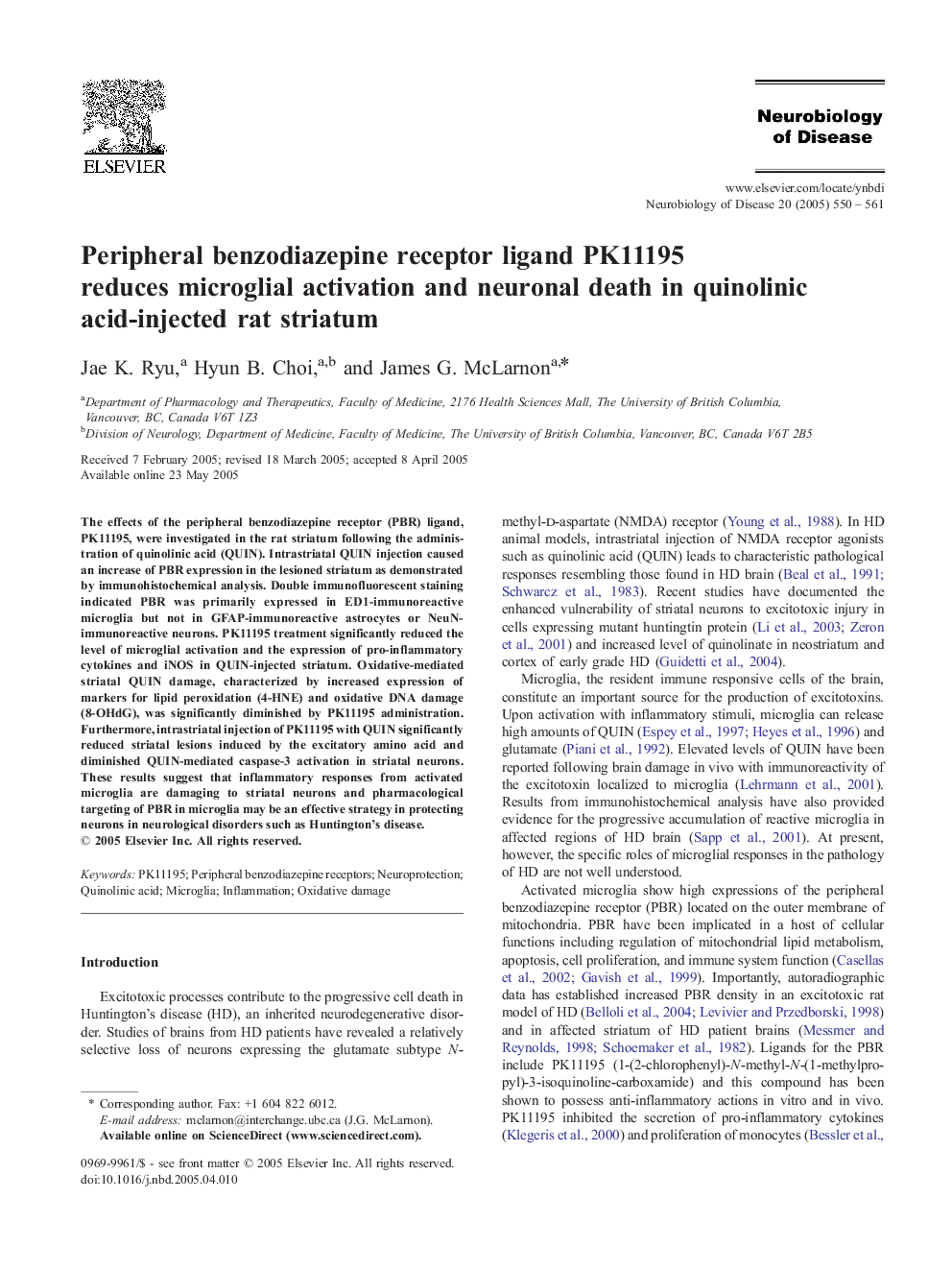| Article ID | Journal | Published Year | Pages | File Type |
|---|---|---|---|---|
| 9989635 | Neurobiology of Disease | 2005 | 12 Pages |
Abstract
The effects of the peripheral benzodiazepine receptor (PBR) ligand, PK11195, were investigated in the rat striatum following the administration of quinolinic acid (QUIN). Intrastriatal QUIN injection caused an increase of PBR expression in the lesioned striatum as demonstrated by immunohistochemical analysis. Double immunofluorescent staining indicated PBR was primarily expressed in ED1-immunoreactive microglia but not in GFAP-immunoreactive astrocytes or NeuN-immunoreactive neurons. PK11195 treatment significantly reduced the level of microglial activation and the expression of pro-inflammatory cytokines and iNOS in QUIN-injected striatum. Oxidative-mediated striatal QUIN damage, characterized by increased expression of markers for lipid peroxidation (4-HNE) and oxidative DNA damage (8-OHdG), was significantly diminished by PK11195 administration. Furthermore, intrastriatal injection of PK11195 with QUIN significantly reduced striatal lesions induced by the excitatory amino acid and diminished QUIN-mediated caspase-3 activation in striatal neurons. These results suggest that inflammatory responses from activated microglia are damaging to striatal neurons and pharmacological targeting of PBR in microglia may be an effective strategy in protecting neurons in neurological disorders such as Huntington's disease.
Keywords
Related Topics
Life Sciences
Neuroscience
Neurology
Authors
Jae K. Ryu, Hyun B. Choi, James G. McLarnon,
